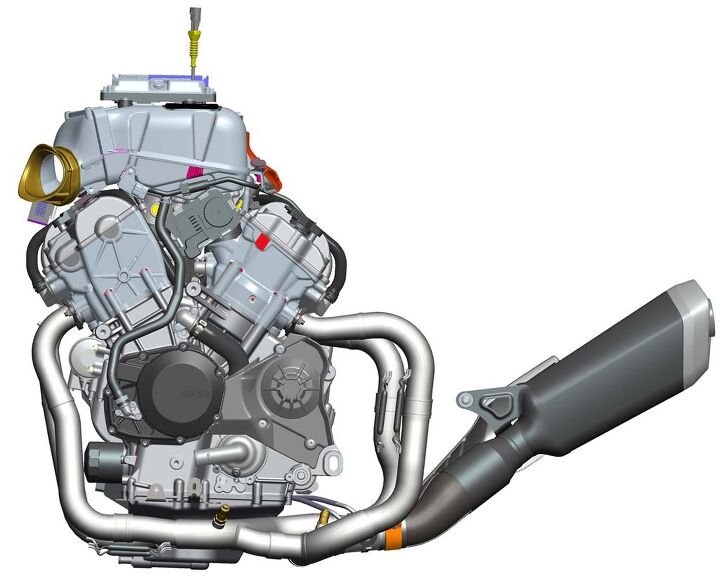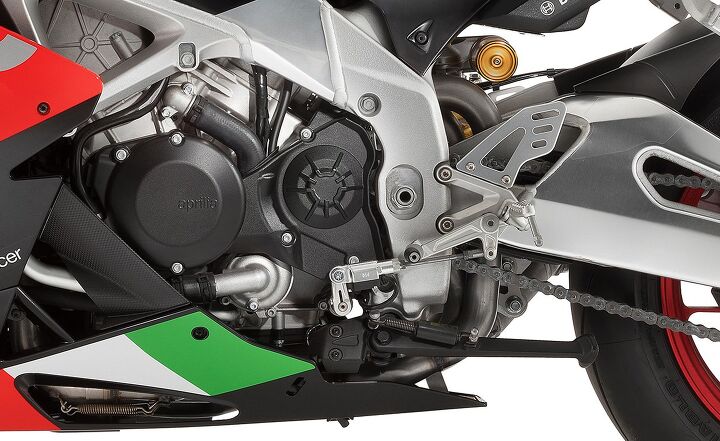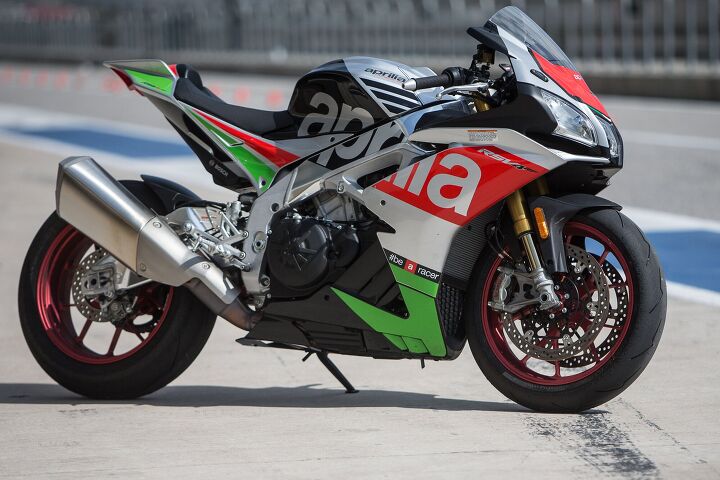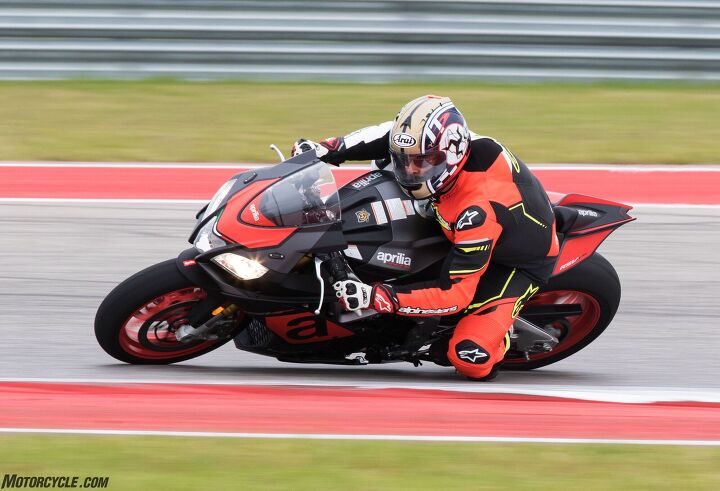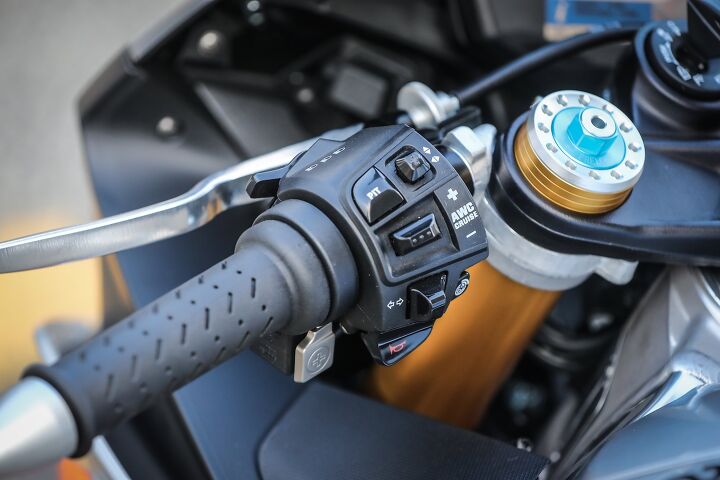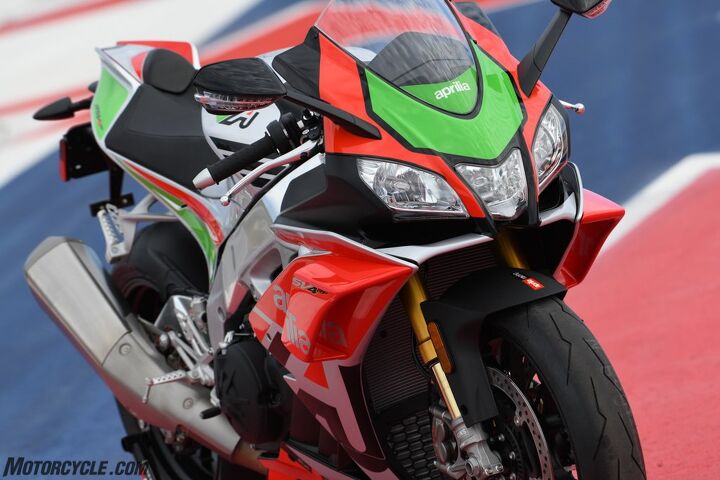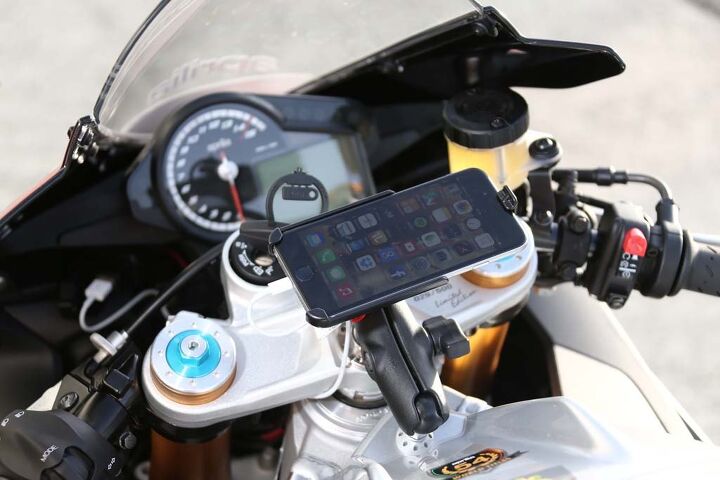In just a few days I’ll be the lucky bas—- who gets to unwind the new Aprilia RSV4 1100 Factory around the legendary Mugello circuit as part of the bike’s international press launch. Stay tuned next week for my thoughts on it. However, in anticipation for that event, I thought I’d look back to see what makes the RSV4 such a darling in the eyes of the moto press. So rewind your minds back ten or so years to 2008/2009 and think about the literbike landscape back then. With the benefit of hindsight, we can say with confidence the space looked pretty bland, with the Big Four Japanese, Ducati, and KTM’s RC8 the only real players (sorry MV Agusta fanboys). The field then got a jolt in 2009 with the announcement of both the BMW S1000RR and Aprilia RSV4 – both models promising to shake up the status quo. If you’ve read any motorcycle magazine since then, you undoubtedly know each bike lives up to the claim. Personally, the Aprilia is one of my favorite liter-class bikes out there. Here are seven ways the RSV4 shook up the game.
7. That V4 Engine
A decade ago if you wanted four cylinders in a literbike engine, they’d all be aligned in a row. If you wanted cylinders opposing each other in a V shape (or L shape for the Ducati purists), you were restricted to two cylinders. With its first 100% in-house engine design, Aprilia’s RSV4 combined the best of both worlds, stuffing four cylinders, 65 degrees apart in a V, with two pistons per bank between the frame spars. The result was an engine we didn’t know we needed until we rode it. During Phase 1 of our 2010 Literbike Shootout, the Aprilia put down 150 horses to the wheel – still a big number in the overall motorcycling landscape, but kinda puny in today’s 200-plus horsepower wars. Thankfully, Aprilia has updated the 1000cc engine over the years to put it right on par with the competition and tickle the double-ton power number.
No matter the year RSV4, we’ve always been enamored by two things: the V4’s linear power delivery and its incredibly intoxicating noise – its intake sounds great while the distinct exhaust note is even better. The new RSV4 1100 should be every bit as spicy.
6. Adjustable Everything
The RSV4 really shook up the sportbike world by allowing its rider/owner to adjust the engine’s position within the frame. Same goes for the swingarm and headstock, too. This was pure racebike territory in the day, which still holds true today – that kind of thing still isn’t common on modern machines. Of course, Aprilia had the benefit of one Max Biaggi to act as a test rider and offer his input about the different positions. Rumor has it when he raced the RSV4 in World Superbike, the engine was left in the standard position in the frame.
Input from the Roman Emperor has paid dividends, as the RSV4 has always been one of the best handling motorcycles out there, its performance praised not just by the MO staff, but by nearly every other publication around the globe. The RSV4 is universally known as being extremely confident on its side with great agility that belies its relatively heavy curb weight.
5. Compact Styling
I remember seeing the RSV4 for the first time and thinking, “Holy moly, that bike is tiny!” Manufacturers talk all the time about centralizing mass and placing it as low as possible, but Aprilia really took that design ethos to heart. The tailpiece is virtually non-existent, and the fact a passenger seat is even offered is funny, if not cruel. But once you get over the compactness of the bike, you realize the RSV4 looks fast just sitting still. Its lines and curves direct your attention to the front, as it’s only what’s ahead that matters. Ten years on and the RSV4 has retained the same basic styling while all of its competitors have gotten facelifts – sometimes twice over. If that’s not a testament to the staying power of Miguel Galluzzi’s design then I don’t know what is.
4. The RSV4 Had An IMU Before It Was Cool
Judged on their own, the words “Inertial Measurement Unit” aren’t very sexy. Somehow, marketing departments at motorcycle manufacturers made it sexy by telling the public their IMU-equipped bike now had advanced, predictive (rather than reactive) traction control. Thing is, Aprilia’s been using IMUs in its RSV4 before everyone else, there just wasn’t much fanfare around it. The Aprilia Performance Ride Control, or APRC for short, is the command center for traction, launch, and wheelie control, and are all dependent on the IMU.
3. TC You Can Change On The Fly
It may not sound like such a big deal, but we’ve long been fans of Aprilia’s clever paddles to allow the rider to change traction control settings on the fly, at the push of a button. Brilliant in its simplicity, it’s only lately that other manufacturers have made TC adjustment as easy.
2. Winglets with the LE
I’ll be the first to say that putting winglets on a production motorcycle is a little ridiculous, but nonetheless, last year Aprilia debuted the limited edition RSV4 RF LE with – you guessed it – winglets. Inspired by Aprilia’s MotoGP racer, I honestly have no idea if the things actually work as claimed (and if they do, I doubt I’d actually notice the difference). But here they are, and only 100 of them are coming to the U.S.
1. Turn-by-Turn Traction Control
A feature that doesn’t get talked about often (and we’re guilty of it as much as any other publication), the RSV4 shook up the game in another way, too. Aprilia’s V4-MP, or Multimedia Platform, is an app for your smartphone, turning it into a virtual dashboard. The cool thing is the app then uses your phone’s GPS to pinpoint the bike’s location on track, and varies traction and wheelie control settings depending on the turn. It can also display other telemetry from your ride, but varying turn-by-turn traction control is by far the coolest.
The post 7 Ways The Aprilia RSV4 Changed The Game appeared first on Motorcycle.com.
【Top 10 Malaysia & Singapore Most Beautiful Girls】Have you follow?
